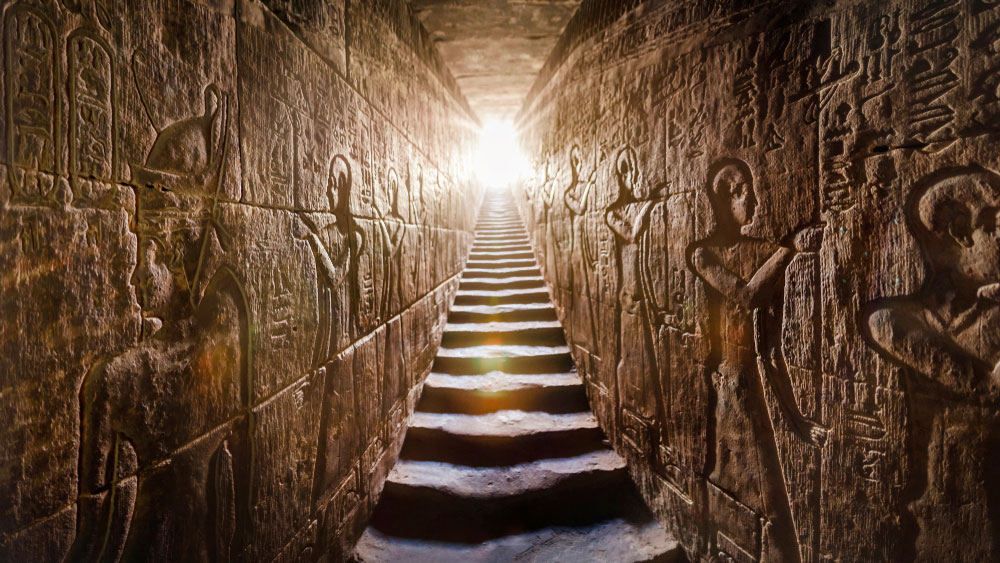Welcome to the land of pharaohs, pyramids, and timeless wonders. Egypt, a cradle of civilization, has captivated the world with its rich history and ancient marvels. In this comprehensive guide, we invite you to embark on an extraordinary journey through the most enchanting ancient Egypt sites to visit. Ancient Egypt Sites to Visit, From the iconic pyramids of Giza to the mystical temples of Abu Simbel, prepare to be transported back in time. For more amazing countries check ontravelx .
Ancient Egypt Sites to Visit
Ancient Egypt, with its rich history and cultural heritage, is a land that has fascinated the world for centuries. As you embark on a journey through this enchanting country, you’ll be transported back in time to explore the wonders of ancient Egypt. From the awe-inspiring pyramids to the intricate temples and tombs, this is a land where history comes alive.
The Iconic Pyramids
The Great Pyramid of Giza
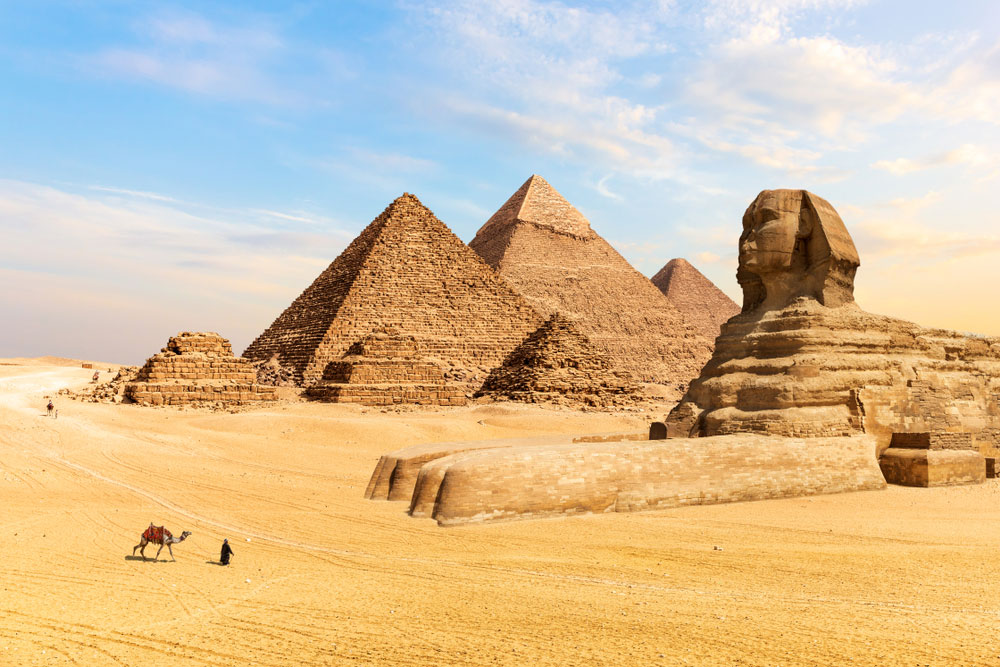
The pyramids was constructed with remarkable precision, aligning its sides almost perfectly with the cardinal points of the compass.
TOURING EGYPT TIPS, Standing tall and proud on the Giza Plateau, the Great Pyramid is a marvel of ancient engineering. Built as a tomb for Pharaoh Khufu, it is the largest and most famous pyramid in Egypt. The sheer size and precision of its construction continue to baffle scientists and historians to this day.
The Pyramid of Khafre
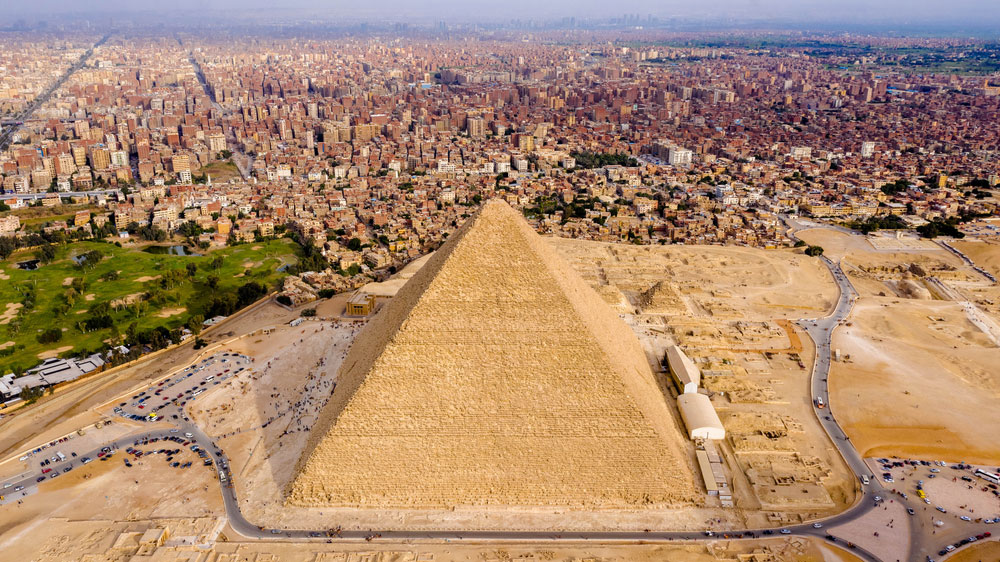
The Pyramid of Khafre, also known as the Pyramid of Chefren, is one of the most iconic and majestic structures in the Giza Necropolis, located on the outskirts of Cairo, Egypt.
Adjacent to the Great Pyramid stands the Pyramid of Khafre, slightly smaller but equally impressive. What sets it apart is the retaining casing stones at the top, which give the illusion of greater height. The Pyramid of Khafre is also home to the enigmatic Sphinx, guarding its entrance.
The Pyramid of Menkaure
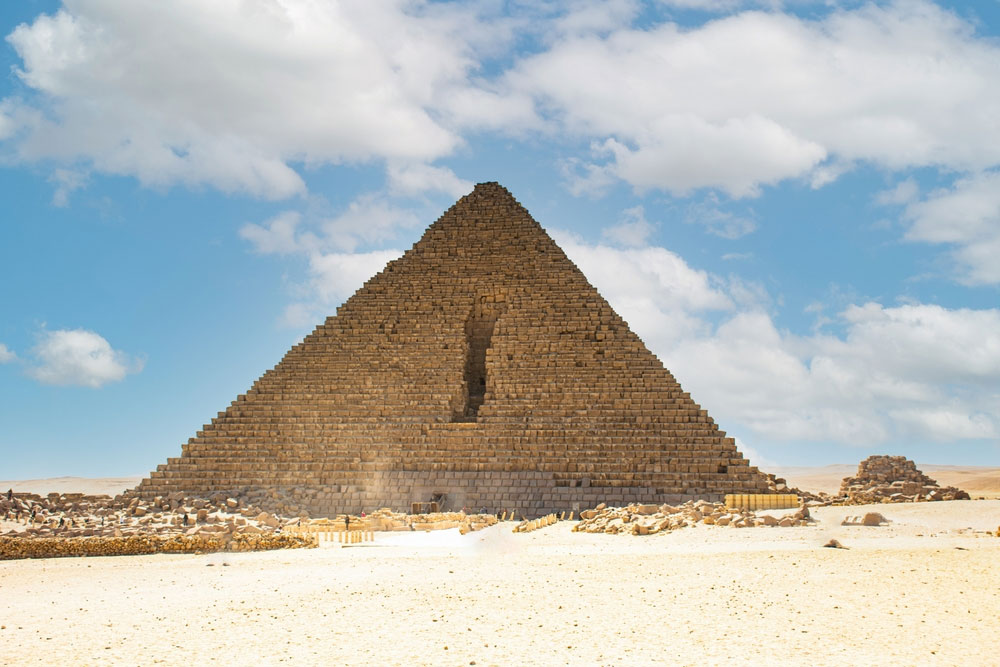
The Pyramid of Menkaure, a remarkable ancient monument nestled in the Giza Necropolis near Cairo, Egypt, stands as a testament to the architectural and cultural achievements of the Old Kingdom period, dating back to approximately 2510 BC.
Though smaller in scale compared to its neighbors, the Pyramid of Menkaure possesses its own charm. Dedicated to Pharaoh Menkaure, this pyramid offers a glimpse into the evolution of pyramid construction techniques.
Enigmatic Sphinx
The Sphinx
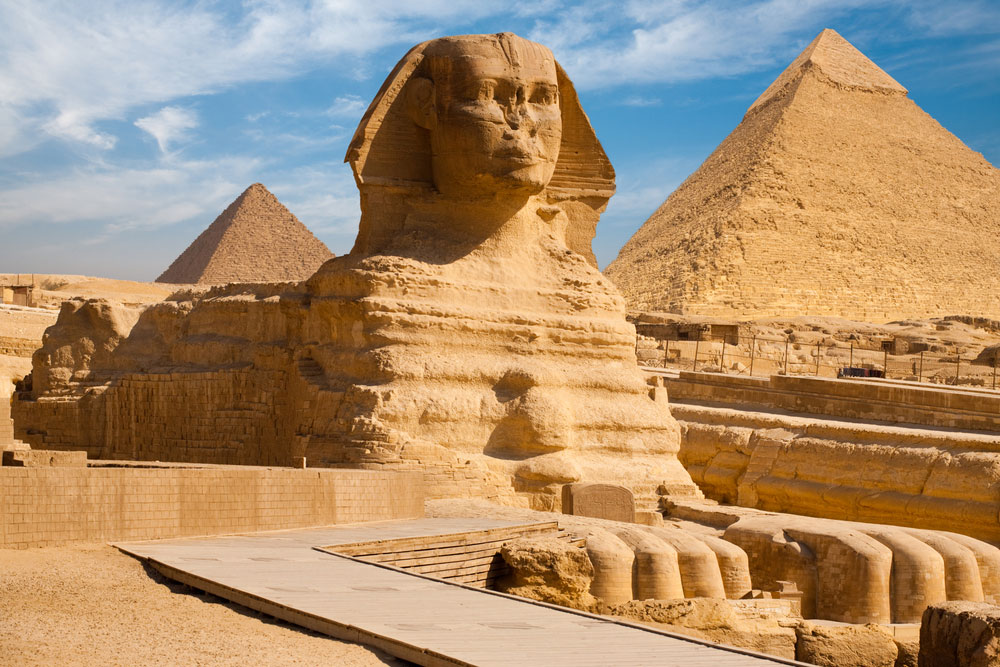
The Sphinx, an iconic and enigmatic monument, has long been a symbol of ancient Egypt and a source of fascination for people from around the world. Located in the Giza Necropolis, just west of Cairo, Egypt, the Sphinx is a colossal limestone statue with the body of a lion and the head of a pharaoh, believed to represent Pharaoh Khafre.
IS EGYPT A GOOD PLACE FOR A FAMILY HOLIDAY?, As you stand before the Sphinx, a colossal statue with the body of a lion and the head of a pharaoh, you can’t help but wonder about the mysteries it guards. The Sphinx’s purpose and the identity of the pharaoh it represents remain topics of debate among scholars and explorers.
Luxor: A Treasure Trove of History
The Karnak Temple Complex
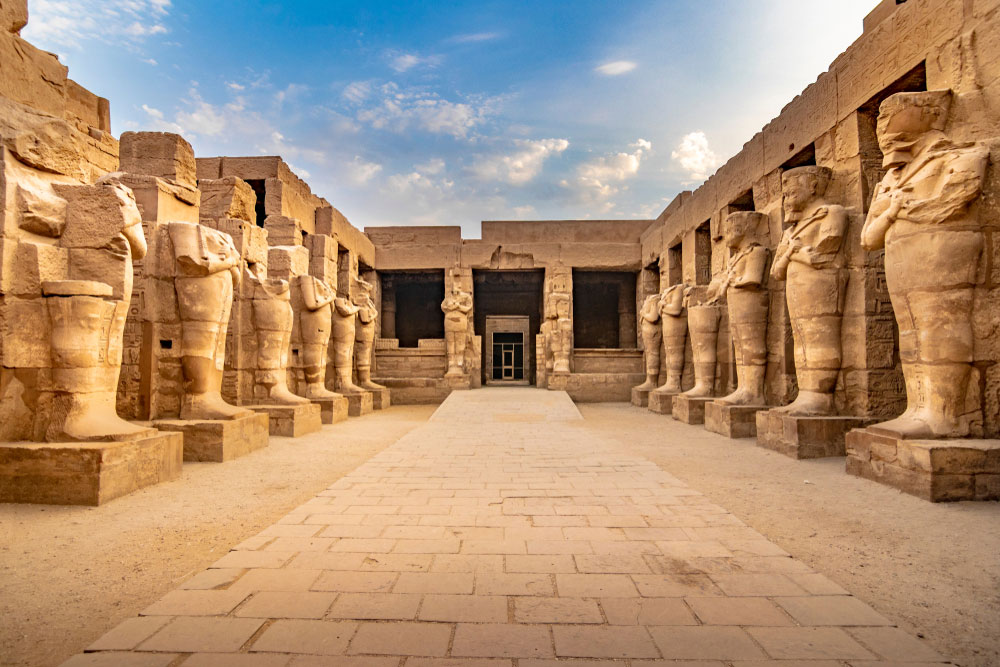
The Karnak Temple Complex, located on the east bank of the Nile River in Luxor, Egypt, is one of the most awe-inspiring and significant archaeological sites in the world.
Karnak is a vast temple complex in Luxor dedicated to the god Amun-Ra. Its sheer size and the intricacy of its hieroglyphics and carvings are a testament to the grandeur of ancient Egyptian architecture. As you walk through its massive columns and halls, you’ll feel the echoes of ancient rituals.
The Luxor Temple
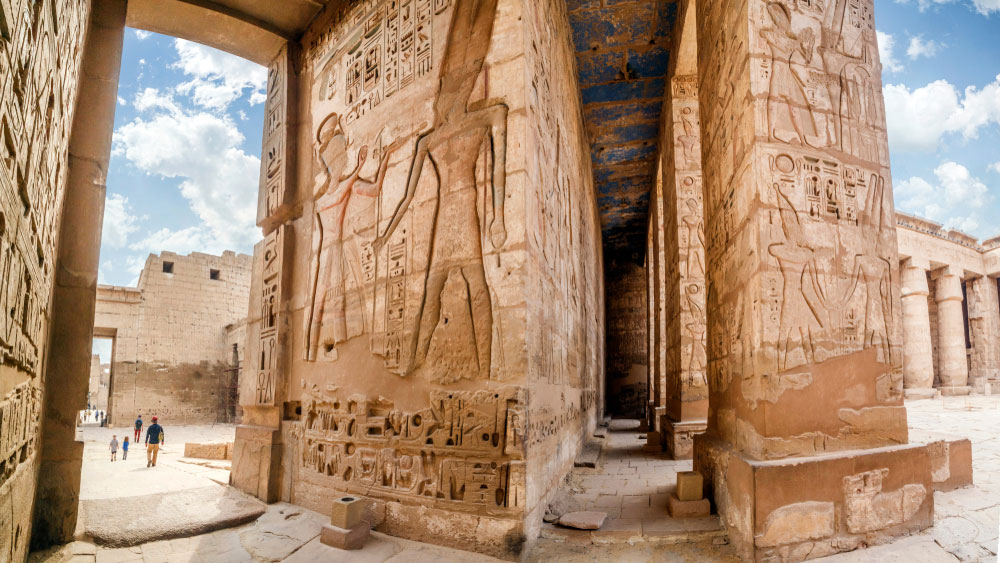
The Luxor Temple, situated on the east bank of the Nile River in the modern city of Luxor, Egypt, is a captivating testament to the architectural and historical riches of ancient Egypt.
Located in the heart of modern-day Luxor, this temple is dedicated to the rejuvenation of kingship. It is particularly enchanting when illuminated at night, creating a magical atmosphere that transports you to another era.
The Valley of the Kings
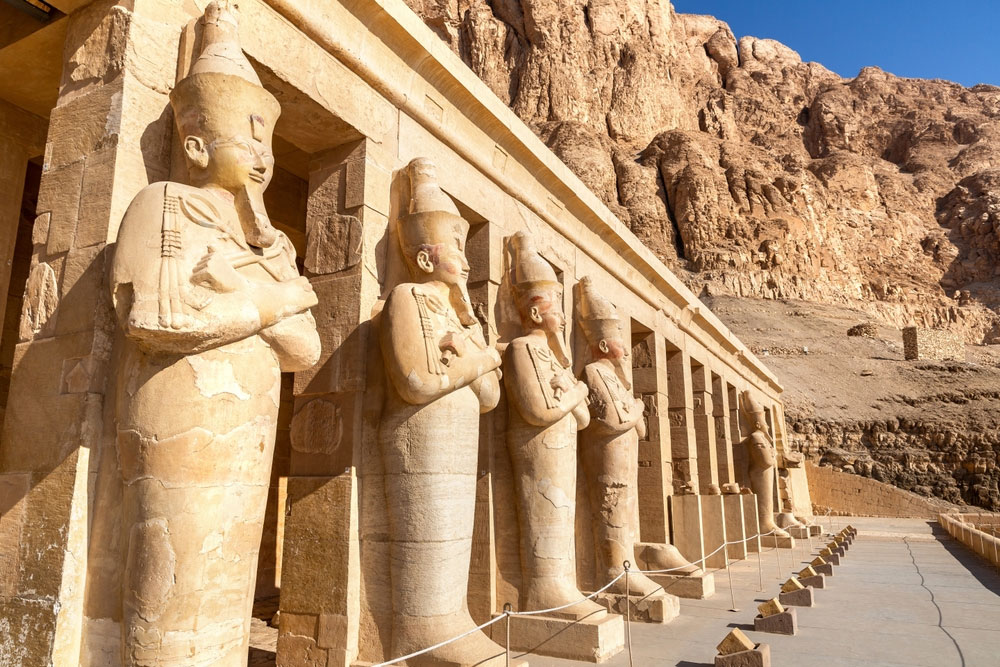
The Valley of the Kings, located on the west bank of the Nile River near Luxor, Egypt, is a hauntingly beautiful and historically significant archaeological site that has captured the imagination of people around the world.
Venture across the Nile to the west bank, where the Valley of the Kings lies. This is the final resting place of numerous pharaohs, including Tutankhamun. Explore the elaborately decorated tombs and discover the stories of the rulers of ancient Egypt.
The Valley of the Queens
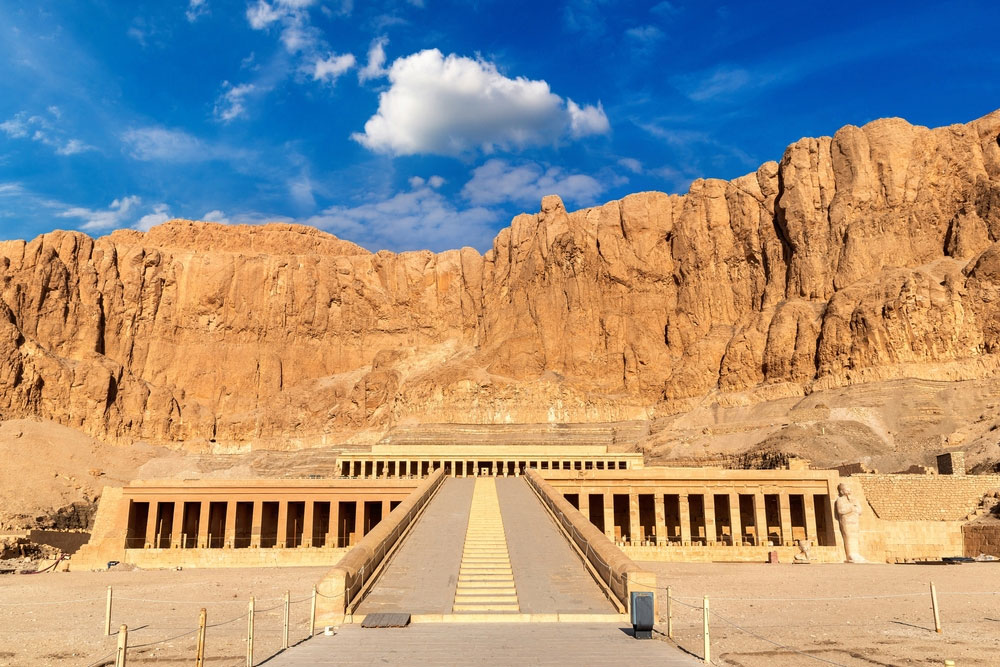
The Valley of the Queens, situated on the west bank of the Nile River near Luxor, Egypt, is a captivating and historically significant burial ground that complements the nearby Valley of the Kings.
Not far from the Valley of the Kings, you’ll find the Valley of the Queens. Here, the queens and princesses of ancient Egypt found their eternal rest. The tombs are adorned with colorful frescoes that depict the journey to the afterlife.
The Mortuary Temple of Hatshepsut
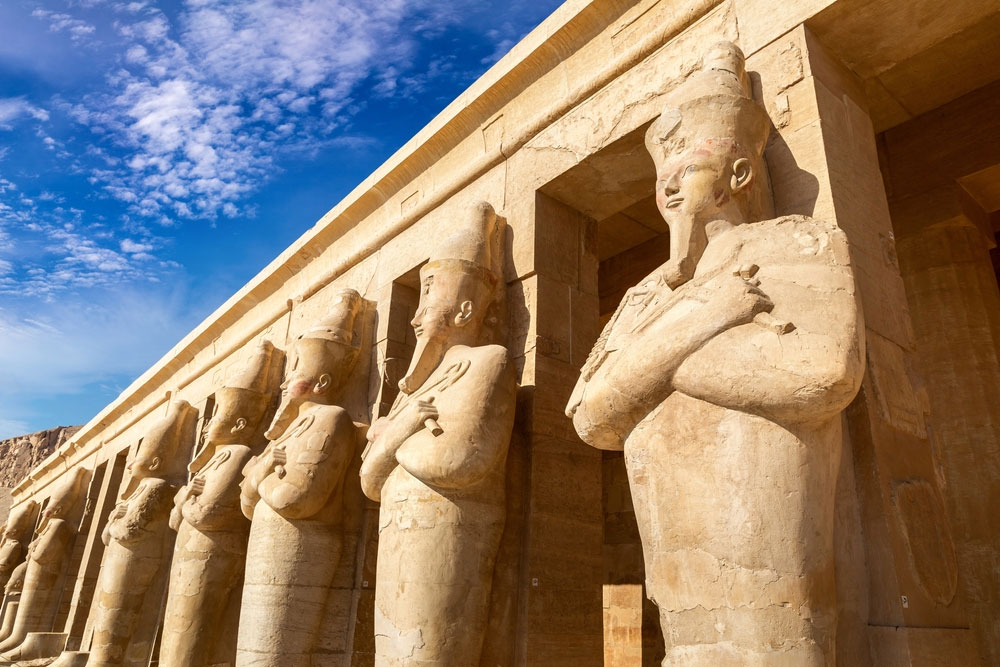
The Temple of Hatshepsut, also known as the Djeser-Djeseru, is a remarkable ancient Egyptian monument located on the west bank of the Nile River near Luxor, Egypt.
This stunning temple, dedicated to one of Egypt’s few female pharaohs, Queen Hatshepsut, is carved into the cliffs of Deir el-Bahri. Its unique architectural design and breathtaking location make it a must-visit site.
The Mystical Temples of Abu Simbel
The Great Temple of Ramses II
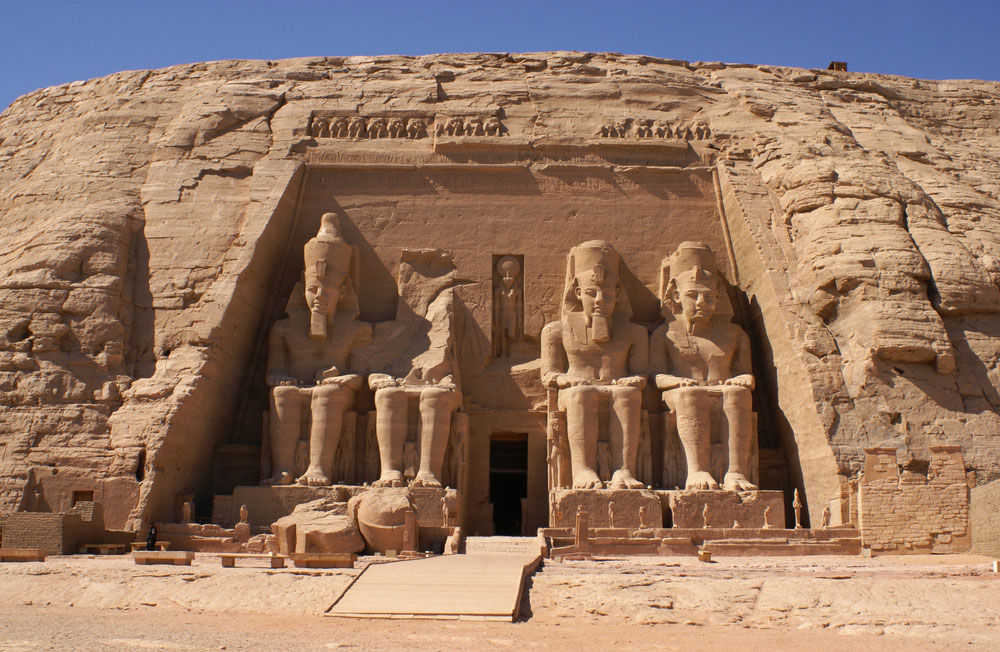
The Great Temple of Ramses II, also known as the Temple of Abu Simbel, is an awe-inspiring monument located in the southern region of Egypt, near the border with Sudan.
EGYPT TRAVEL GUIDE, The temples of Abu Simbel, located in the southern part of Egypt, are a triumph of ancient engineering and artistic skill. The Great Temple, dedicated to Ramses II, features colossal statues and intricate reliefs that celebrate the pharaoh’s military victories and divine status.
The Small Temple of Nefertari
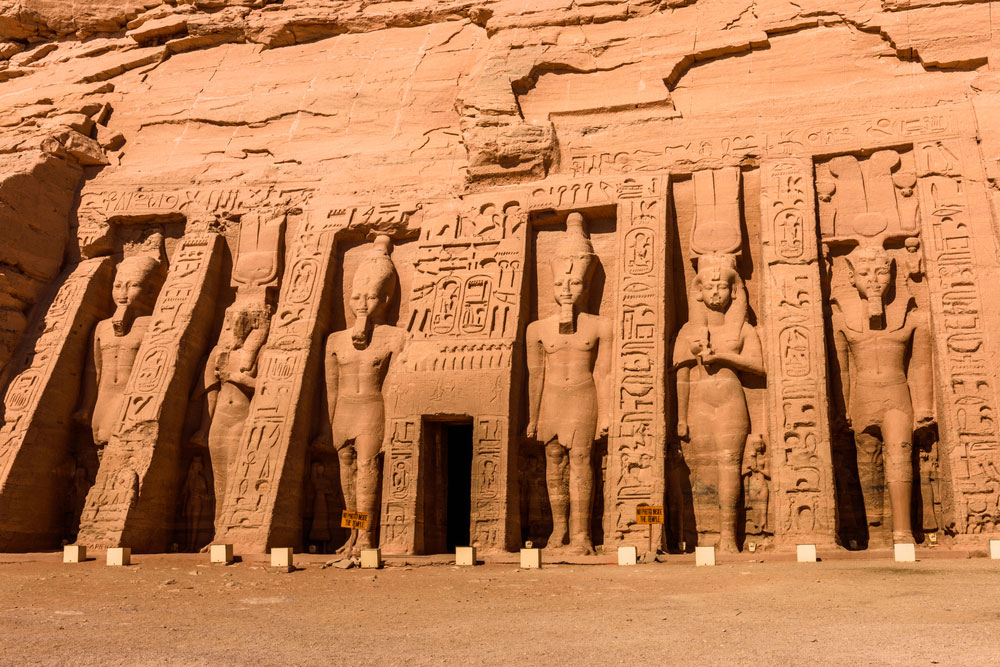
he Small Temple of Nefertari, also known as the Temple of Hathor, is a remarkable ancient Egyptian temple located in the southern region of Egypt, near Abu Simbel. This temple, dedicated to Queen Nefertari, the beloved wife of Pharaoh Ramses II.
WHAT ARE THE BEST CAIRO SIGHTSEEING PLACES?, Adjacent to the Great Temple is the Small Temple, dedicated to Queen Nefertari, Ramses II’s beloved wife. It is a testament to the deep affection and respect the pharaoh held for his queen.
As you explore these remarkable sites, you’ll gain a deeper appreciation for the ingenuity, spirituality, and artistry of the ancient Egyptians. Each stone, each hieroglyphic, and each monument tells a story that has endured for millennia, waiting for you to discover it. Egypt’s wonders are a testament to the enduring legacy of one of the world’s greatest civilizations.
Ancient Egypt is a treasure trove of history, culture, and archaeology. It’s a place where the past comes to life, and every stone whispers stories of dynasties and pharaohs.
Sailing the Nile
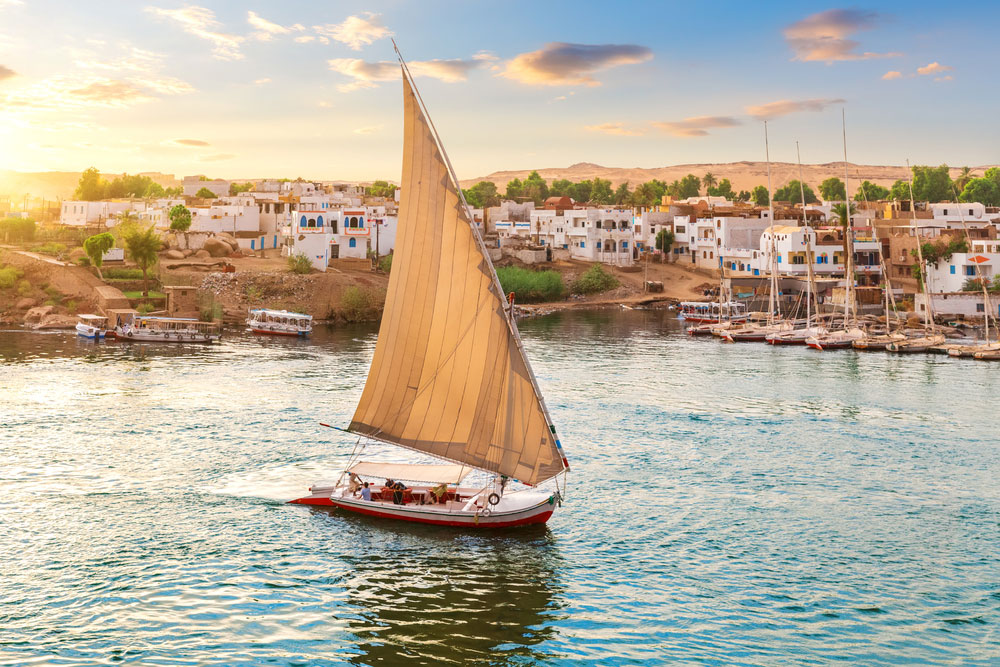
Sailing the Nile River is a captivating and timeless experience that offers a unique perspective on Egypt’s rich history and stunning landscapes.
HOTTEST PLACE IN EGYPT IN DECEMBER, One of the most enchanting experiences you can have in Egypt is sailing down the legendary Nile River. As you embark on this serene journey, you’ll follow in the wake of pharaohs, explorers, and adventurers who have traversed this life-giving waterway for thousands of years. Sailing the Nile is not just a means of transportation; it’s a window into Egypt’s history, culture, and natural beauty.
A Floating Oasis of Luxury
WHAT TO WEAR IN EGYPT IN FEBRUARY, Nile River cruises offer travelers the opportunity to explore Egypt’s iconic sites while enjoying the comforts of a floating oasis. These cruise ships, often resembling elegant boutique hotels, provide a luxurious base for your Egyptian adventure. Picture yourself sipping a refreshing drink on the sun deck, surrounded by breathtaking views of the Nile’s lush banks.
Exploring Ancient Treasures
IS FEBRUARY A GOOD TIME TO VISIT EGYPT?, One of the highlights of a Nile cruise is the opportunity to visit the ancient temples and archaeological wonders that line the river’s shores. Stops along the way may include the temples of Luxor and Karnak, the Valley of the Kings, and the Temple of Edfu, to name just a few. These excursions allow you to step back in time and immerse yourself in the history of ancient Egypt.
The Tranquil Rhythms of the Nile
As you gently glide along the Nile, you’ll be lulled by the tranquil rhythms of the river. The Nile has been Egypt’s lifeblood for millennia, and its waters have witnessed the rise and fall of pharaohs and empires. Taking in the scenery from your cruise ship, you’ll gain a deep appreciation for the vital role this river has played in shaping Egypt’s civilization.
Experiencing Traditional Felucca Boats
Sailing the Nile in Authentic Style
For a more authentic and traditional experience, consider taking a ride on a felucca—a wooden sailing boat with a single mast. Feluccas have plied the waters of the Nile for centuries, and they offer a unique way to explore the river at a slower pace. These boats are often operated by skilled local captains who can navigate the Nile’s currents with ease.
A Closer Connection to the River
Sailing on a felucca allows you to forge a closer connection with the Nile. You’ll feel the gentle breeze, listen to the soft lapping of water against the hull, and watch the ever-changing scenery along the riverbanks. It’s a serene and contemplative experience that offers a glimpse into the daily life of Egyptians who rely on the Nile for their livelihoods.
Romantic Sunset Cruises
FUN PLACES IN EGYPT CAIRO, Felucca rides are particularly magical during the golden hours of sunrise and sunset. Imagine drifting along the Nile as the sun casts a warm, amber glow over the water, creating a romantic and unforgettable atmosphere. Sunset cruises on a felucca are perfect for couples seeking a moment of tranquility and romance.
Sailing the Nile, whether on a luxurious cruise ship or a traditional felucca, is an experience that will stay with you long after your journey through Egypt has ended. It’s a chance to connect with the timeless beauty of the Nile, absorb the rich history that surrounds you, and create cherished memories of your adventure through the heart of ancient Egypt.
Diving into Ancient Alexandria
Alexandria, once a center of culture and learning, still holds echoes of its glorious past.
Alexandria, a city steeped in history and mystery, offers a unique blend of ancient wonders and modern allure. Located on the Mediterranean coast of Egypt, this city has been a crossroads of cultures for centuries. As you explore Alexandria, you’ll discover its rich past, from the time of the pharaohs to the days of the Roman Empire and beyond.
The Catacombs of Kom El Shoqafa
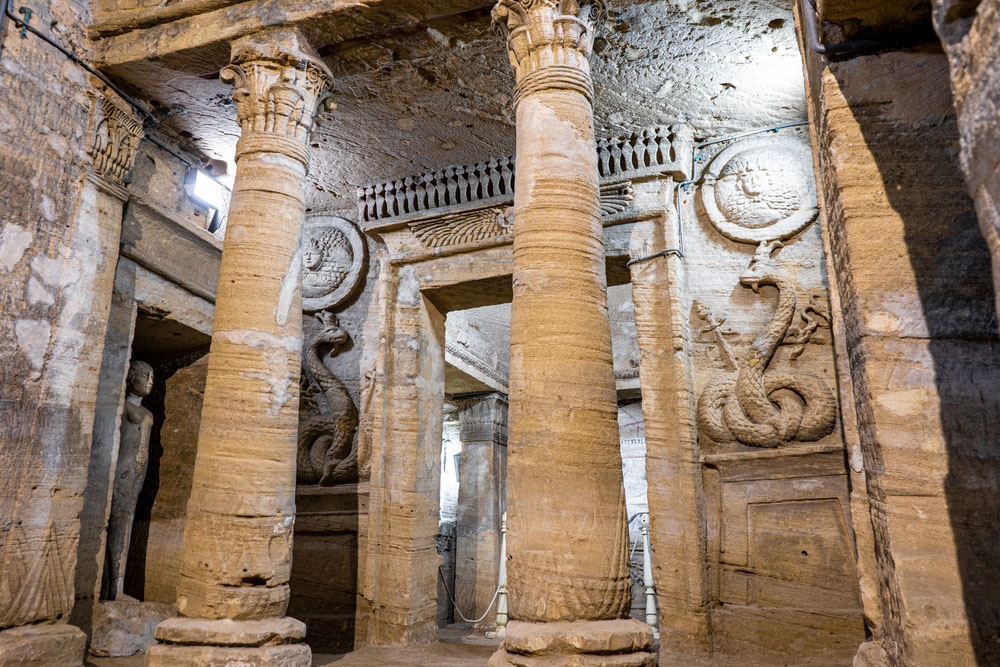
The Catacombs of Kom El Shoqafa, located in Alexandria, Egypt, are an intriguing and historically significant archaeological site that offers a glimpse into the blending of Egyptian, Greek, and Roman cultures during the Hellenistic and Roman periods.
Descend into the depths of Alexandria to uncover the enigmatic Catacombs of Kom El Shoqafa. These catacombs, dating back to the 2nd century AD, are a testament to the fusion of Egyptian and Roman art and burial traditions. As you explore the labyrinthine tunnels and chambers, you’ll encounter intricate carvings, statues, and fascinating glimpses into the past.
A Meeting of Cultures
The Catacombs of Kom El Shoqafa provide a striking example of Alexandria’s role as a melting pot of cultures. Here, you can see how ancient Egyptian burial customs blended with Roman influences, creating a unique and captivating archaeological site.
Pompey’s Pillar
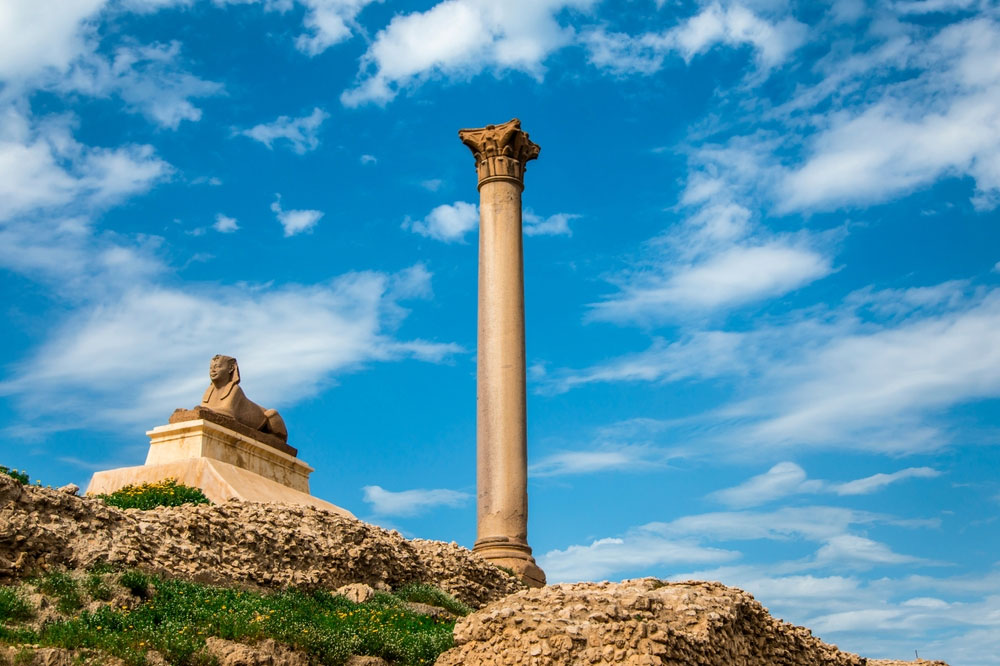
Pompey’s Pillar is a striking and historically significant monument located in Alexandria, Egypt. Despite its name, the pillar has no direct connection to the Roman general Pompey, but it remains an iconic and prominent archaeological site in the city.
Stand in awe of Pompey’s Pillar, a colossal monolith that rises 82 feet (25 meters) above the Alexandria skyline. Despite its name, this pillar has no direct connection to the Roman general Pompey. Instead, it was erected in honor of the Emperor Diocletian during the 4th century AD.
A Glimpse into Roman Alexandria
Pompey’s Pillar serves as a reminder of Alexandria’s prominence during the Roman era. As you explore the surrounding area, you’ll find remnants of ancient columns and structures, offering insights into the city’s grandeur in antiquity.
Qaitbay Citadel
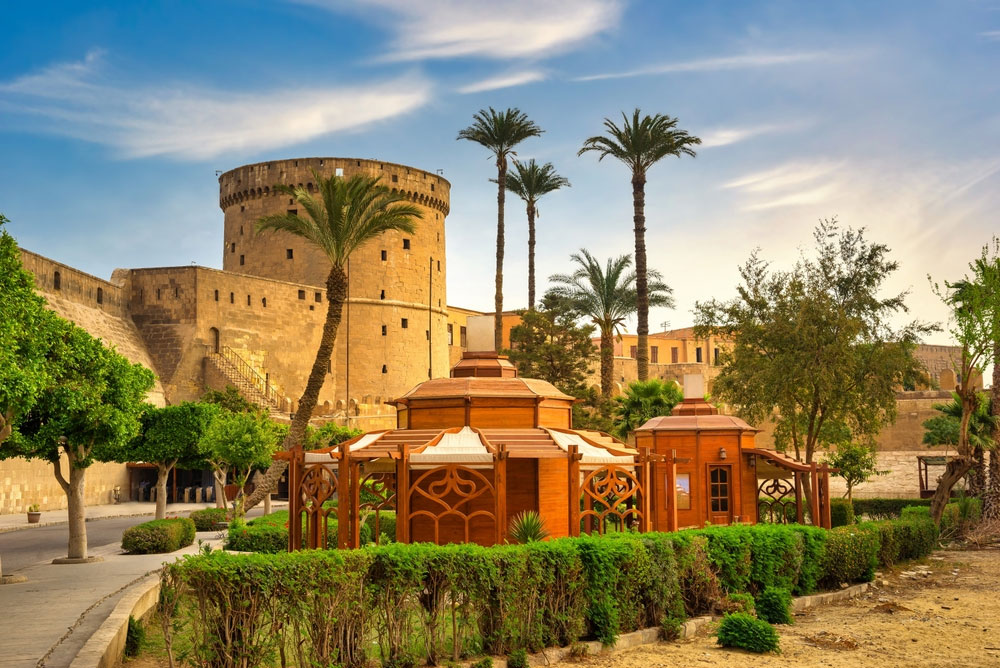
The Qaitbay Citadel, also known as the Citadel of Qaitbay, is a historic fortress located in Alexandria, Egypt. This impressive citadel is a prominent symbol of the city’s maritime and military history.
Explore the Qaitbay Citadel, a medieval fortress that has stood the test of time. Built in the 15th century by Sultan Qaitbay, this citadel occupies the site of the famous Lighthouse of Alexandria, one of the Seven Wonders of the Ancient World.
A Coastal Icon
From the citadel’s vantage point along the Mediterranean coast, you’ll be treated to breathtaking views of the sea. The Qaitbay Citadel is not only a historical gem but also a place to savor the beauty of Alexandria’s coastline.
The Montaza Palace Complex
Royal Retreat
Experience the opulence of the Montaza Palace Complex, a series of palaces and gardens that served as a royal retreat for Egypt’s rulers. Built during the reign of King Farouk in the early 20th century, the complex is a blend of architectural styles, including Turkish, Florentine, and Andalusian.
Montaza Gardens
Stroll through the lush Montaza Gardens, where you can admire beautifully landscaped grounds, colorful flowers, and serene lakes. It’s a tranquil oasis in the heart of Alexandria, perfect for relaxation and contemplation.
The Bibliotheca Alexandrina
A Beacon of Knowledge
No visit to Alexandria is complete without a stop at the Bibliotheca Alexandrina, a modern library and cultural center that pays homage to the ancient Library of Alexandria. This architectural marvel houses a vast collection of books, manuscripts, and cultural exhibitions.
A Tribute to Ancient Wisdom
The Bibliotheca Alexandrina symbolizes Alexandria’s enduring commitment to knowledge and culture. It stands as a tribute to the lost library of antiquity and a testament to the city’s enduring spirit of intellectual curiosity.
As you dive into the treasures of ancient Alexandria, you’ll be captivated by the layers of history that have shaped this coastal gem. From subterranean catacombs to towering pillars and medieval citadels, the city’s rich tapestry of the past awaits your exploration. Alexandria invites you to unravel its mysteries and immerse yourself in its timeless allure.
Experiencing Nubian Culture
As you venture into the heart of Nubia, a region that spans southern Egypt and northern Sudan, you’ll embark on a cultural odyssey like no other. Nubia is a land of ancient traditions, vibrant colors, and warm hospitality. The Nubian people have a rich history that predates the pharaohs, and their culture continues to thrive along the banks of the Nile. Join us as we delve into the enchanting world of Nubian culture.
Nubian Villages
A Warm Welcome Your journey into Nubian culture begins with a visit to the charming Nubian villages that dot the banks of the Nile. As you step into these villages, you’ll be greeted by smiling faces and open arms. The Nubian people are known for their hospitality, and you’ll immediately feel like a cherished guest.
Vibrant Colors and Unique Architecture Nubian villages are a riot of colors. The houses are adorned with intricate geometric designs, painted in bright hues of blue, pink, and green. The vibrant colors not only add to the visual appeal but also serve a practical purpose, as they help keep the interiors cool in the scorching Nubian sun.
Traditional Nubian Cuisine
A Culinary Journey No cultural exploration is complete without savoring the local cuisine, and Nubian food is a delightful journey for the taste buds. Nubian cuisine reflects the region’s history and geography, blending flavors from Egypt and Sudan. Here are some must-try dishes:
- Ful Medames: A hearty breakfast dish made from fava beans, olive oil, and spices.
- Karkadeh: A refreshing hibiscus tea served hot or cold, often sweetened with sugar or honey.
- Okra Stew: A flavorful stew made with okra, tomatoes, and a mix of spices.
- Nubian Bread: Freshly baked bread, often served with honey or jam.
Cooking with Locals To truly immerse yourself in Nubian culture, consider participating in a cooking class with local Nubian families. Learn the art of preparing traditional dishes, and savor the flavors of homemade Nubian cuisine. It’s a hands-on experience that will deepen your connection to the culture.
Nubian Dance Performances
Rhythm and Energy Nubian culture comes alive through music and dance. Nubian dance performances are a celebration of life, love, and community. The rhythmic beats of drums and the graceful movements of the dancers create an atmosphere of joy and energy.
Audience Participation Don’t be surprised if you’re invited to join in the dancing. Nubians love to share their culture with visitors, and dancing together is a way to bridge cultural gaps and forge connections.
Nubian Crafts and Art
Traditional Crafts Nubian artisans are renowned for their craftsmanship. You’ll have the opportunity to explore local markets and shops where Nubian crafts are on display. Look for intricately woven baskets, colorful fabrics, and hand-carved wooden items.
Authentic Souvenirs When you purchase Nubian crafts, you’re not just buying souvenirs; you’re supporting local artisans and preserving their traditional way of life. These authentic souvenirs will serve as cherished reminders of your Nubian cultural experience.
The Language of Nubia
Nubian Languages Nubians speak various Nubian languages, which are distinct from Arabic and have their own unique scripts. While many Nubians also speak Arabic, learning a few basic Nubian phrases can go a long way in fostering connections and showing respect for the culture.
Cultural Exchange
A Two-Way Street Experiencing Nubian culture is not just about what you receive; it’s also about what you give. Engage with the local community, ask questions, and share stories about your own culture. It’s through this exchange that you’ll gain a deeper understanding of Nubian traditions and create lasting memories.
Your journey into Nubian culture is a tapestry of colors, flavors, and traditions that will leave an indelible mark on your heart. It’s a chance to connect with a people whose warmth and vibrancy mirror the beauty of the Nubian landscape. As you bid farewell to this captivating region, you’ll carry with you the spirit of Nubia and the memories of a cultural adventure like no other.
Where to Savor Egyptian Food?
Egyptian cuisine is a delightful fusion of flavors and traditions that reflects the country’s rich history and diverse influences. From aromatic spices to hearty dishes, Egyptian food offers a tantalizing journey for your taste buds. To savor the best of Egyptian cuisine, explore the following dining options across the country.
Local Eateries and Street Food Stalls
Street Food Delights For an authentic culinary adventure, head to local eateries and street food stalls. Here, you’ll find an array of mouthwatering dishes served up by skilled cooks who have perfected their recipes over generations. Some must-try street foods include:
Koshari: A flavorful combination of rice, lentils, pasta, chickpeas, and crispy fried onions, topped with a tangy tomato sauce.
Ful Medames: A hearty breakfast dish made from slow-cooked fava beans, often served with a drizzle of olive oil and a sprinkle of spices.
Egyptian-Style Falafel: Deep-fried patties made from ground fava beans or chickpeas, usually served in pita bread with tahini sauce and vegetables.
Local Cafes Egypt is dotted with local cafes where you can enjoy a cup of strong Egyptian coffee or sweet, aromatic tea. Pair your drink with freshly baked pastries or traditional desserts like basbousa (semolina cake soaked in syrup) or kunafa (sweet pastry made with shredded phyllo dough).
Travel Tips for Exploring Ancient Egypt
Before your journey, here are essential tips to ensure a smooth and enriching experience.
Visa Requirements
Understand Egypt’s visa requirements and entry procedures.
Currency Exchange
Learn about currency exchange options and managing your finances in Egypt.
Local Etiquette
Respect local customs and etiquette to make the most of your visit.
Sustainable Tourism
Embrace responsible travel practices and contribute positively to the communities you visit.
Responsible Travel Choices
Make environmentally conscious choices while exploring ancient Egypt.
Supporting Local Communities
Engage with local communities and support their sustainable initiatives.
Eco-Friendly Tours
Choose eco-friendly tour operators committed to preserving Egypt’s natural beauty.
Captivating Sunset Views
Egypt boasts stunning sunset vistas that will leave you breathless.
Best Spots to Watch the Sunset
Discover the most scenic locations to witness breathtaking sunsets across Egypt.
Stargazing in the Desert
Experience the magic of the Egyptian desert at night and gaze at the stars.
Conclusion
As we conclude our journey through ancient Egypt, we hope you’ve been inspired to embark on your adventure. Egypt’s timeless wonders await, promising an unforgettable experience that blends history, culture, and unparalleled beauty.
People Also Ask :
What is the most ancient site in Egypt?
One of the most ancient sites in Egypt is the Great Sphinx of Giza, which is believed to date back to the Old Kingdom period, around 4,500 years ago.
What is the oldest site in Egypt?
One of the oldest sites in Egypt is the archaeological complex of Saqqara, which includes the Step Pyramid of Djoser, built during the 27th century BCE, making it one of the earliest pyramid structures.
What is the most popular place in ancient Egypt?
The most popular and iconic place in ancient Egypt is the Pyramids of Giza, particularly the Great Pyramid, which is considered one of the Seven Wonders of the Ancient World.
What is something I must see in ancient Egypt?
You must see the Luxor Temple and Karnak Temple complexes in Luxor, as they are some of the most impressive and well-preserved examples of ancient Egyptian religious architecture and history.
Plan your trip with ontravelx and get ready for a journey full of breathtaking sights and priceless memories.
Kindly Visit:
https://egypttimetravel.com/holidays-to-egypt-in-december/


